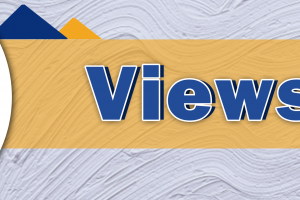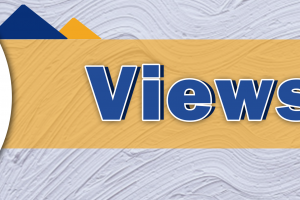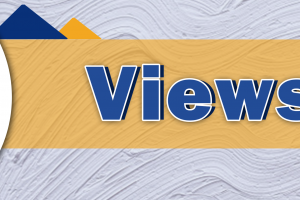In the last two decades, significant progress has been made in investigating how politics and institutions influence poverty. Usually, studies of poverty ignored the role of institutions and politics. These studies mainly focused on the social and economic risks of poverty.
Several studies on poverty revealed that households with single breadwinner were more likely to be poor. In the developed countries, economists often documented how poverty rose and fell with the business cycle. But, scholars have recently devoted increasing attention to how politics and institutions shape the distribution of economic resources and how this ultimately drives poverty.
It is now widely understood that much of the variation in poverty across developed countries is due to politics and institutions. While previously poverty studies concentrated on population and economic performance, they are now beginning to emphasize social policy and labor unions.
These studies are drawing attention to how “politics and institutions” shape poverty in developing countries, including Ethiopia. It has been shown that the effects of population risk factors, such as poverty, unemployment or migration are themselves conditioned by politics and institutions. Political and institutional explanations of poverty and inequality have never been as prominent as today.
Studies focused on the exploration of the role of economic and social policies in various countries. These comparisons have included analysis of taxes and transfers, which are essential factors to household income. Because taxes and transfers are largely determined by government, its role in poverty and inequality is becoming prominent.
The rising prominence of the government in inequality is now well recognized. T. Piketty sparked debates, which called for a global “tax on capital” as a means to moderate inequality. But, revenues of governments in developing countries may cause income inequality between the poor and the rich.
There has been a scholarly response for rising inequality. Scholars often lamented that sociology and political science had failed to study the increasing inequality occurring in rich democracies. Yet, over the past decades, there has been growing interest in the “sources” of rising inequality, and political and institutional explanations have grown in prominence.
This is partly because the prevailing “population and economic” explanations have failed to give full explanation for trends in poverty and inequality. Therefore, political scientists, sociologists and others have stepped in with political and institutional explanations for poverty and inequality.
Scholars are engaged in the analysis of how politics and institutions shape poverty. Studies have animated the general contention that poverty is shaped by the “combination” of power resources and institutions. On one hand, scholars in the power resources tradition have emphasized the role of class-based collective political actors for mobilizing “power resources” in the state and economy.
On the other hand, proponents’ of institutionalism have highlighted the role of formal rules and regulations. Contemporary political explanations of poverty suggest “state policy” as a key mediator between politics, institutions and poverty. They also explain how politics and institutions can have both direct and indirect effects on poverty.
Power resources refer to collective actors that bond together and mobilize “less” advantaged classes of citizens around common interests. These groups gain electoral power by forming unions and Left parties, and when in office, these parties expand the welfare state. Proponents of “Power Resources” claim that the mobilization of such groups of less advantaged citizens is pivotal because the avoidance of distribution of political power in a capitalist democracy favors elites and business.
This inclination of favoring business and elites leads to an unequal distribution of income. Hence, it is essential for the “working class, poor, and others” to bond together some of the middle class to gain any real political power.
Beyond simply expanding the welfare state, proponents of power resources offer a more general model of income distribution. In contrast to Left parties mobilizing in elections, business and elites can mobilize in the labor market and corporate boardrooms to funnel more economic resources in their own direction.
Because power resources can be mobilized in both workplaces and zones, their effects might manifest in the distribution of earnings and employment. It is reasonable to think of power resources as a mechanism for collective actors to accomplish economic egalitarianism by gaining power, and controlling offices and positions with authority over markets, taxation, social policies, and other distribution processes.
Traditionally, power resources strategy anchored its micro level mechanisms in the rational “self-interest” of the poor and working class to expand the welfare state. This is explained by the mobilization of classes based on their material interests.
Many scholars still attribute a considerable role for material interest. This makes sense as it is in the material interests of the poor and working class to have a larger welfare state and more redistribution. Constituencies of beneficiaries, even among the middle class or affluent, have a rational interest in forming coalitions with the working class and poor to maintain existing social policies.
Social scientists have sought to broaden the reasons why the working class and poor will mobilize. Building on power resources, it is argued that existing social policies cultivate widely held beliefs and expectations that feed back into the politics of welfare state. The powerful cultural expectations that result from social policies then greatly influence how people vote and constrain politicians seeking to limit welfare states. Hence, power resources could be effectively mobilized for the welfare state because citizens tend to favor egalitarianism.
Unions and Leftist parties: Influenced by power resources, scholars demonstrated the effects of labor unions on economic inequality. Considerable research has shown that unionization is associated with higher earnings for the average worker, lower compensation for elites leading to lesser inequality. Scholars have shown that unionization reduces the presence of low-paid jobs and boosts the earnings of the less skilled, younger, and temporarily employed workers that are vulnerable to poverty. Unions accomplish greater security and better compensation for workers because they pressure management to raise wages, encourage rules against the use of temporary workers (whose presence would reduce wages), and regulate working conditions.
Unions disseminate egalitarian discourses, influence policy, and shape the regulation and governance of labor markets. Regardless of how or why, there is clear and convincing evidence of a strong relationship between unionization and higher wages, and lower inequality and poverty. Compared to the jobless, the working poor have been relatively neglected even though the majority of poor people in the rich countries reside in households with employed people.
However, in the past decades, it has been observed that unionization reduces the individual-level working poverty. It has been found that unionization is more important than the economic performance or social policies of the state. Also, the strong influence of unions allows them to show that unionization benefits both unionized and nonunionized workers.
Unions also matter to poverty because they are key players in electoral politics. Unions mobilize voters, align and form coalitions with political parties, and influence government administrators. Indeed, unionization has often been utilized to show how the power resources of the working class trigger welfare state development.
Unionization explains or indicates differences in poverty and inequality within countries. This demonstrates that in addition to directly affecting the workplace and earnings (or household income before taxes and transfers), unions indirectly influence poverty by encouraging more generous social policies.
The relevance of unions to electoral politics and social policy complements the role of political parties. In many accounts, Leftist parties are the actors that actually establish egalitarianism by enacting laws and policies favoring the poor and reducing inequality.
It is argued that unions have a “crucial mediating role” in implementing policy. As a result, many show a relationship between Leftist party power and lower poverty. It is, however, suggested that the cumulative and long-term, rather than the current, power of Left parties that matters. For instance, studies show that the rich developed countries with a history of Left party power tend to have lower poverty than those traditionally governed by centrist and Right parties.
Beyond class-based actors like business, labor, and parties, scholars have included the mobilization of other disadvantaged groups. Most prominent are women’s electoral mobilization and presence in government. They influence the development of the welfare state, which ultimately bears on poverty and inequality. Using a “coalitional approach” which covers a variety of actors such as parties, organized labor, and business all come together to define inequality.
Apart from coalitions, institutions can be thought of as stable agreements and historical settlements that channel, constrain, and regulate the behavior of firms, workers, and other actors and hence contribute to inequalities in a country.
BY GETACHEW MINAS
The Ethiopian Herald May 2/2021




